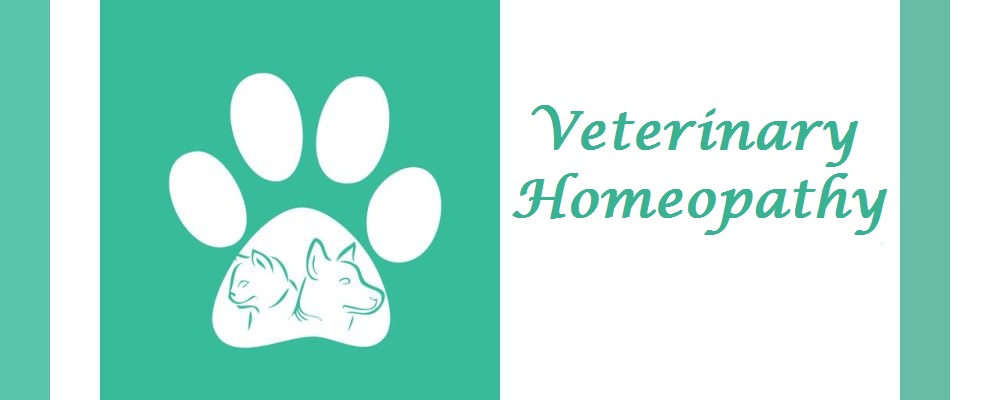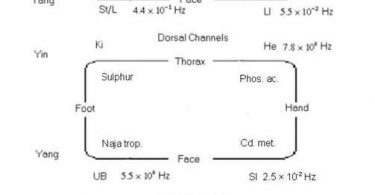H.R. Parsani/ B.S. Chandel
College of Veterinary Science and Animal Husbandry, D. Agricultural University
Sardarkrushinagar- 385 506
Gujarat, India
Email:-[email protected]
ABSTRACT
The parturient period is critical for health, production and subsequent fertility of dairy animals. A trial was conducted to evaluate the efficacy of homoeopathic uterine tonic, restorative and ecbolic product Uterogen liquid (Manufactured by Goel Homoeo Pharma, Chittorgarh, Rajasthan, India) in treatment of post parturient complications in dairy animals. 10 cross bred cow suffering from retained foetal membranes were taken as the treatment groupI and 10 healthy animals were taken as untreated control group II.
Group I was treated with homoeopathic uterine cleanser Uterogen @ 5 ml orally by syringe starting after the calving at one hour intervals till expulsion of placenta & @ 5 ml bid orally by syringe for the next five days. There was marked improvement in terms of expulsion of retained placenta, lochial discharge and time required for involution of uterus and appearance of post partumestrus in treated groups as compared to the control group. The results of the study reveal that the administration of homoeopathic uterine tonic preparation is helpful in the treatment of reproductive disorders viz. Retained placenta and post partum anoestrus in cows.
Keywords:Uterogen, Ecbolic, Homoeopathic, Post Parturient Reproductive Disorder.
INTRODUCTION
Post parturient reproductive disorders are prevalent in high-producing dairy animals and require prompt diagnosis and treatment. Uterine complications have been associated with reduction of pregnancy per artificial insemination (AI), long calving interval, increased culling and economic losses (Bartlett et al., 1986; Gilbert et al., 2005; and Sheldon & Dobson 2004).
Post partum period is the most critical transitory phase for health, production and subsequent fertility of dairy animals. During this period the dairy animals are exposed to high risk of infection to uterus as the anatomical barriers are breached and genitalia remains open for various days to involution (Goff and Horst 1997).
Retention of placenta is one of the most common diseases in post partum period in dairy animals. Retention of placenta is a condition in which the animal fails to release the placenta 12 or 24 hours after calving). Post parturient retention of foetal membranes causes economic loss due to loss of milk and delay in involution of uterus and subsequent conception, early embryonic mortality and the problems of repeat breeding or even permanent infertility (Narasimhan and Deopurkar, 1994).
Post-parturient anoestrus is a major reproductive disorder in dairy animals. Poor post partum reproductive health may prolong the post partum intervals and deteriorate conception rate in animals (Peelaret al., 1994).
Fertility of a cow is vitally linked with the post partum genital status including proper involution of uterus and re-establishment of the ovarian cyclicity. It is a more common problem during the puerperal period subsequent to parturition. In the absence of proper and absolute involution of the uterus in the post-parturient period, reestablishment of reproductive cycle activity may get excessively delayed. Moreover, even residual infection in the uterus may prevent the secretion of prostaglandin F2 alpha in quantity sufficient to ensure luteolysis.
Many drug preparations are commonly used for uterine cleansing and initiating involution. Many herbal ecbolic preparations scientifically validated to be efficacious in cleaning up the uterus, for increasing uterine tone and for timely involution of uterus (Singal, 1996).
The beneficial effect of herbal uterine tonic-cleansing agent in induction of post-partum oestrus and in improving the reproductive efficiency in cows and buffaloes, has also been been documented by (Verma et al., 1994; Khanna et al., 1996). The appropriate nutritional, diagnostic and treatment methods would undoubtedly help in alleviating these disorders.
In view of the higher cost and invariable effects of hormonal therapy, the alternative approach in present scenario is non-hormonal therapy.Some homeopathic products are thought to improve contractility of the uterine muscle and intensify the blood flow in the endometrium and help in expulsion of placenta.
As a result of this the attention is now moving towards the homoeopathic formulations. The present clinical trial is designed to study the efficacy of homoeopathic uterine tonic Uterogen (Manufactured by Goel Homoeo Pharma, Chittorgarh, Rajasthan, India) in decreasing the time of expulsion of placenta and maintenance of post partum reproductive health in dairy animals.
MATERIALS AND METHOD
The research was carried out on 20 cross bred cows belonging to a private dairy farm, Banaskantha district, Gujarat, India during the year 2017. The study is conducted with an aim to evaluate efficacy of homoeopathic uterine tonic Uterogen(Manufactured by Goel Homoeo Pharma, Chittorgarh, Rajasthan, India) in prevention of retained placenta, delayed involution of uterus in cows and to test its efficacy in timely estrus induction and then successful conception in lesser number of Artificial inseminations (AI’s). Uterogen composition viz. CaulophyllumThalictroides 30, Cimicifuga racimosa (Actaearecemosa) 30, Cantharis, Cinchina officinalis 30,Pulsatilla nigricans30,Rhustoxicodencron 30, Sepia 30, Sabina 30, Secale cornutum30,Ustilago30,and Alcohol 12% w/v.
Experimental design: For this study, twenty crossbred cows in their advanced pregnancy were selected and were randomly divided into two groups, each comprising 10 animals. Group I is treatment with Uterogen and group II is the untreated control.
Treatment: Untreated control group animals were not given any treatment or supplemented with any uterine tonic or cleanser or cleanser product. Treatment group I animals were prophylactically administered with homoeopathic uterine tonic product Uterogen @ 5 ml orally by syringe start after the calving at one hour intervals till expulsion of placenta & @ 5 ml bid orally by syringe for next five days. The dose rate of the product is chosen on the basis as per manufacturer’s instruction. Being a homoeopathic based formulation, the dosage is not body weight dependent.
Parameters Studied: The efficacy was assessed on the basis of time required for expulsion of placenta (hrs), disappearance of lochial discharge (day), time required for uterine involution (days) and appearance of first post-partum heat (days).
RESULTS
The efficacy of the product was evaluated in terms of time required for expulsion of placenta, disappearance of lochial discharge, time required for involution of uterus and duration for onset of post partum oestrus.
Time required for expulsion of placenta (hrs)
After treatment with Uterogen time required for expulsion of placenta was significantly lower (P<0.05) in group I (4 ± 0.20 hrs) animals as compared to the untreated control group II (9 ± 0.65 hrs).
Disappearance of lochial discharge (day)
Time required for disappearance of lochial discharge in Uterogen treated group I was 6 ± 0.25 days, which was significantly lower (P<0.05) than untreated control animals of group II (12 ± 0.52 days).
Time required for uterine involution (days)
Time required for uterine involution was also significantly low (P<0.05) in Uterogen treated group I (23 ± 1.29 days) animals as compared to untreated control group II (34 ± 1.13 days).
Appearance of first post—-partum heat (days)
Time required for appearance of first post-partum estrus was significantly less (P<0.05) in Uterogen treated group I (59 ± 0.28) days in comparison to untreated control group II (90 ± 2.58 days).
DISCUSSION
The results of the present study are in agreement with the earlier reports on herbal formulation for its efficacy as a uterine cleansing agent in expulsion of membranes, restoration of lochial discharge and involution of uterus in bovines (Waliaet al.,2012). The results of the present study may be attributed to the constituents of Uterogenviz. Caulophyllum Thalictroides 30, Cimicifuga racimosa (Actaearecemosa) 30, Cantharis 30, Cinchona officinalis30, Pulsatilla nigricans 30, Rhus toxicodencron 30, Sepia 30, Sabina 30, Secale cornutum30,Ustilago30,and Alcohol 12% w/v and many more with documented action profile.
Such homeopathic medicines are thought to improve contractility of the uterine muscle and intensify the blood flow in the endometrium and help in expulsion of placenta.Uterogen helps by reducing progesterone and increasing oxytocin level with help pituitary, which stimulates and produce oxytocin hormone.
Oxytocin with the help of gonotropic hormones helps in expulsion and involution of genitalia. Uterogen organises the complicated process as non hormonal motivator and catalyst. Oral administration of homoeopathic uterine tonic Uterogen with proven ecbolic as well as uterine cleansing and restorative actions, appears to be a safe and effective option both therapeutically and prophylactically. The product is found to be safe for animal usage and do not exert any detrimental effect on animal health.
Table
| Parameters | Group I | Group II |
| Time required for expulsion
of placenta (hrs) |
4 ± 0.20* | 9 ± 0.65 |
| Disappearance of
lochial 5 ± 0.25* 11 ± 0.42 discharge (days) |
6 ± 0.25* | 12 ± 0.52 |
| Time required for uterine
involution (days) |
23 ± 1.29* | 34 ± 1.13 |
| Appearance of first postpartum
Heat (days) |
59 ± 0.28* | 90 ± 2.58 |
*: The values differ significantly at P<0.05
CONCLUSION:
Manual removal of placenta can cause uterine trauma and can delay return to normal reproductive status. In retention of foetal membrane complicated by septic metritis, manual removal is not advised. Since the uterus is friable, there is every possibility of trauma, bleeding, shock and death and the obstetrician may get contact dermatitis or infection, if he does not handle the cow with proper protection to the hands. It appears very wise to allow the placenta to drop of its own accord and remove gently from the uterus 7 to 10 hours after parturition so as to prevent endometritis.
The homoeopathic uterine tonic preparations Uterogen was observed to be an effective uterine cleansing agent and restorative to ensure post-parturient reproductive health of dairy animals by timely expulsion of retained fetal membranes, disappearance of lochial discharge, timely uterine involution and appearance of first postpartum heat.
Based on the results it can be concluded that Uterogen may be recommended as a treatment for post partum retained placenta and as a co-therapy with parenteral antibiotics in severe cases and for timely onset of post-partum oestrus. Uterogen has extra benefits: It is non-hormonal, there’s no residue in milk, dose of the medicine is minimum but the effect is maximum, it’s easy for animals to take and the owner to give the medicine and no possibility of drenching problem.
The authors declare that they have no conflict of interest with the manufacturer. Their interest in the formulation was due to the fact that the homeopathic remedy leaves no residue in dairy products such as are found after allopathic drugs, and its ease to use.
REFERENCES
Bartlett, P. C.; Kirk, J. H.; Wilke, M. A.; Kaneene J. B. and Mather E. C. (1986) Metritis complex in Michigan Holstein-Friesian cattle: incidence, descriptive epidemiology and estimated economic impact, Prev. Vet. Med. 4: 235-48.
Gilbert, R. O.; Shin, S. T.; Guard, C. L.; Erb H. N. and FrajblatM.(2005) Prevalence of endometritis and its effects on reproductive performance of dairy cows, Theriogenology 64: 1879-88.
Goff, J. P. and Horst, R. L.(1997) Physiological changes in parturition and their relationship with metabolic disorders, Journal of dairy science, 80: 1260-1268.
Khanna, S., Khurana, K.L., Tripathi, V.N. and Manuja, A. 1996. Effect of Exapar (herbaluterine cleanser and restorative) on some parameters of reproductive efficiency in buffaloes. Indian J. Anim. Reprod. 51:231-237.
Narasimhan, K.S. and Deopurkar, V.L. 1994. Accidents and diseases incidental to parturition. In: Sane, C. R. and others (Eds.). Reproduction in farm animals. 2nd ed., Varghese Publishing House,Bombay.
Peeler, E.J., Otte, M.J., Esslemont, R.J., 1994. Inter-relationships of periparturient diseases in dairy cows. Vet. Rec., 134:129-132.
Singal, S. P. 1996. Efficacy of Exapar in post parturient disorders with retained placenta in ovines. Indian J. Anim. Reprod., 17:109-110.
Sheldon I. M. and Dobson, H.(2004) Postpartum uterine health in cattle, Anim. Reprod. Sci. 82-83: 295-306.
Verma, H.K., Singla, V.K., Sidhu, S.S. and Singh, J. 1994. Role of Replanta in post-partum anoestrus buffaloes. Indian J. Anim. Hlth. 33:133-134
Walia, R; Ravikanth, K; Maini S and Sood, D. (2012) Therapeutic efficacy of Exapar-N in cases of postpartum gynaecological disorders in cows: a field study, Engormix 566.



